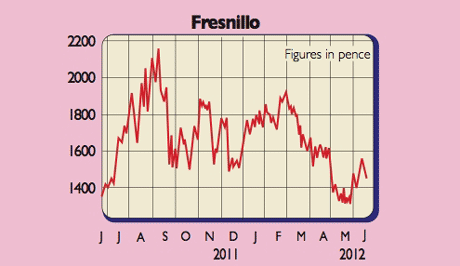Fresnillo is the world’s largest primary silver producer (ie, the company makes more than half of its revenues from silver extraction) and the second largest gold producer in Mexico. The prices of both these monetary metals have proven surprisingly volatile over the past year. However, their longer-term prospects seem assured given the explicit aim of Western governments to pursue a course of inflation and currency devaluation.
Having exposure to both metals has helped Fresnillo outperform not only the FTSE All-Share (by more than 160% over the past four years), but also the FTSE Mining Index (by 200% over the same period). That performance has also helped to swell the wallet of Alberto Baillères, who owns 77% of the company and is Mexico’s second-richest man.
The business has a keen eye on costs (the company sits in the lowest cost quartile amongst its peer group), but maintains an impressive selection of assets, including five active mines in Mexico and four other projects in development plus a number of exploration prospects.
With no debt on its balance sheet, it boasts a rock-solid Altman Z score (my preferred metric to assess corporate health). Fresnillo has conceded that 2011 was an exceptional year. Pre-tax profits rose by 50% to $1.5bn on revenues that grew by 56% to $2.2bn. The firm maintains a cash pile of over $500m, and has a dividend policy that aims to return 50% of net profit to shareholders.
Fresnillo (LSE: FRES), rated OUTPERFORM by RBC Capital Markets

The stock trades on a forward price/earnings (p/e) ratio of 21 times, reflecting investor expectations of future growth. It also offers a dividend yield of 4.6%, higher than a typical mining company. The company has already exceeded the target it set at the time of its flotation (May 2008) of generating gold production of 400,000 ounces annually; it now aims to produce 65 million ounces of silver and 500,000 ounces of gold per year by 2018, with 650 million ounces of silver and five million ounces of gold in reserves at that date.
One of the few dark clouds overhanging the industry is higher input costs. Costs per extracted tonne increased last year due to higher average electricity and diesel prices (15.4% and 15.2% respectively), higher costs for key operating materials, and more safety and ground control measures.
But the company expects a combination of European sovereign risk, geopolitical instability, subdued global growth, persistent low interest rates in the US (and elsewhere) and continued accumulation of gold reserves by central banks to keep demand for precious metals buoyant.
Rating: BUY
Category: Investing in Gold

